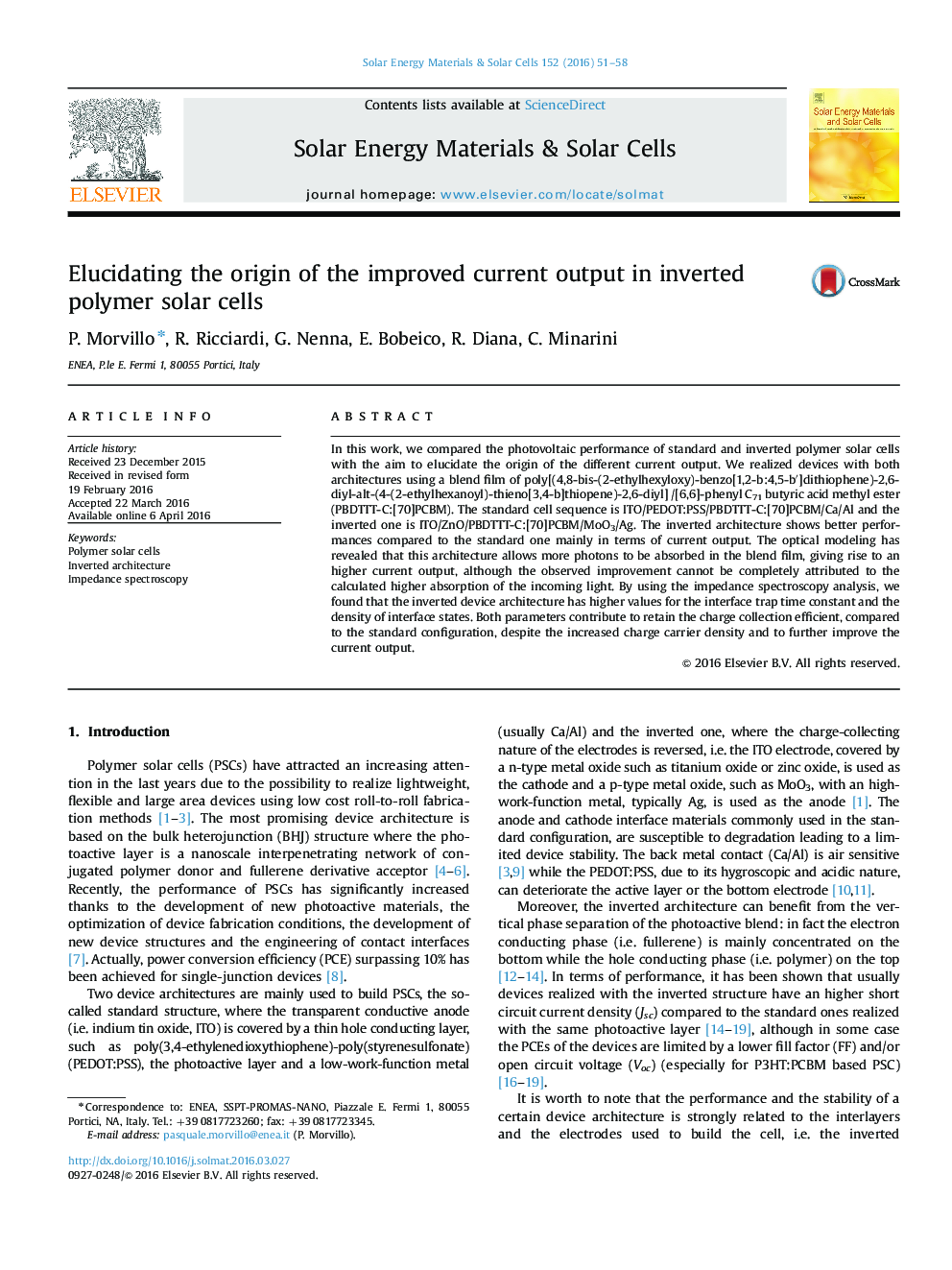| Article ID | Journal | Published Year | Pages | File Type |
|---|---|---|---|---|
| 77576 | Solar Energy Materials and Solar Cells | 2016 | 8 Pages |
•We investigated the origin of the current output of standard and inverted PSCs.•The inverted device shows better performances compared to the standard one.•The inverted device allows more photons to be absorbed in the blend film.•The electrical behavior of the devices was investigated by impedance spectroscopy.•The inverted device shows better charge collection properties.
In this work, we compared the photovoltaic performance of standard and inverted polymer solar cells with the aim to elucidate the origin of the different current output. We realized devices with both architectures using a blend film of poly[(4,8-bis-(2-ethylhexyloxy)-benzo[1,2-b:4,5-b′]dithiophene)-2,6-diyl-alt-(4-(2-ethylhexanoyl)-thieno[3,4-b]thiopene)-2,6-diyl] /[6,6]-phenyl C71 butyric acid methyl ester (PBDTTT-C:[70]PCBM). The standard cell sequence is ITO/PEDOT:PSS/PBDTTT-C:[70]PCBM/Ca/Al and the inverted one is ITO/ZnO/PBDTTT-C:[70]PCBM/MoO3/Ag. The inverted architecture shows better performances compared to the standard one mainly in terms of current output. The optical modeling has revealed that this architecture allows more photons to be absorbed in the blend film, giving rise to an higher current output, although the observed improvement cannot be completely attributed to the calculated higher absorption of the incoming light. By using the impedance spectroscopy analysis, we found that the inverted device architecture has higher values for the interface trap time constant and the density of interface states. Both parameters contribute to retain the charge collection efficient, compared to the standard configuration, despite the increased charge carrier density and to further improve the current output.
